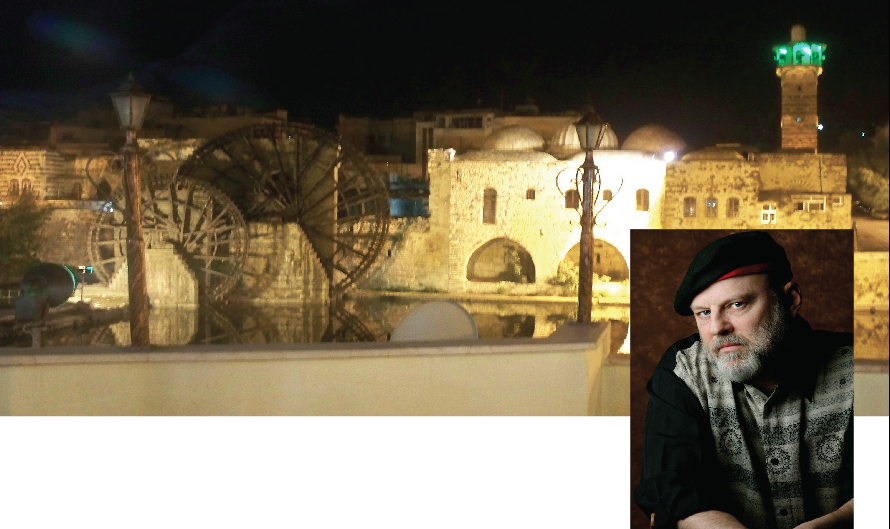17 July 2013
CITY AT THE END OF TIME
How the Mighty Have Fallen

In a weed-filled yard on the edge of Vilnius, Lithuania, Alex & Evan Gabriel give Josef Stalin what-for.
A decade ago their statues loomed over the city, dominators from beyond the grave. Their word had been law, had been life or death to millions. Across the globe, in revolutionary cells and colonnaded universities and musty, cubicled buildings, the sources of their power and thought were studied like holy writ. First names not necessary: Lenin. Stalin. Larger than life.
Larger than life, too, were those looming statues. In Vilnius—capital of the dear departed Lithuanian Soviet Socialist Republic—thirty iron feet of Comrade Lenin sat in the central square on Gediminas Street, just across from the massive, haunted KGB building. . . .
Then came the Chain of Freedom . . . the fall of the Berlin Wall . . . the martyrs of the tank attacks on the Vilnius TV tower . . . and with a shudder that shook the world, the Soviet Union was gone. Neighbors banded together to pull down the statues. Lenin, resisting to the end, broke off at the knees. Stalin—whose statues had been removed as long ago as the late fifties on some cases—went more easily, more completely. But everywhere, the symbols began to disappear.
Where are they now?
We take the #1 bus out along a bumpy road from the center of the city towards the airport. A crowd of Gypsies rides behind us and when we ask the driver to pull over and let us out at a massive, faceless ironcasting factory, the entire population of the bus stares us off.
The tip we’ve gotten says to look in the fields outside the factory, but we haven’t reckoned on the size of the building, or the overgrowth of the surrounding fields. Chain fences everywhere, weeds and garbage, dusty bushes as high as my head. There is nothing to be seen. It’s Sunday, and the factory is closed, so my plan to “ask inside” goes nowhere. We wander around one end and then back across the front, around to a side street. The chain fence goes on for half a block and then, lying in the weeds near a gravel entrance, our boys spot fallen figures.
Up close we can see a cast-iron soldier, some unidentifiable figures, and what looks to be the trademark handlebar moustache of the biggest killer in history. “Can we climb the fence, Dad?”
Suddenly, an officious watchman scuttles out of a nearby office. Uh-oh, trouble, we think. But, wordless, he intuits our need and hustles us through a narrow walkway past his office—his wife sharing the Sunday silence from inside—and beckons us to enter. . . . when we come to Stalin in his greatcoat and marshall’s hat and dead, staring eyes we focus, as we must, on the atrocities. The Ukraine famine, the extermination of the Kulaks, the NKVD terror that led to the KGB, the gulags . . . and the boys, grim-faced and shocked, turn and spit down on the empty eyes. For once, we do not stop them. They kick at his head, shouting denunciations; perhaps much as his henchmen treated dissidents.
But . . . where is Lenin? We ask the watchman. He seems to expect the question. . . . At last, jammed behind a broken-down tractor and garbage cart, we see a rusted chain-link cage. Inside the cage, broken off at the knees, looms the oversized head of Vladimir Illytch Lein, architect of revolution and, in his later years, instigator of state terror.
He’s leaning on his side, head bowed, as if in sorrow at this, his final fate. Caged, broken, all but forgotten . . . and there, just beneath him, a second statue of Josef Stalin faces upwards. The two old dictators stare at each other, sightless, powerless, dead for all time at the end of what was to be their century. “Where did we go wrong, comrade?” they seem to be saying. “What will become of us now?”
What indeed. Will the Lithuanians remelt these statues and forge new ones? Will they create some sort of museum of the damned? Will these gates be closed to future visitors? We don’t know the answer, but we can feel the tug of history in the empty faces lying here, caged, behind the dusty back wall of a factory on the edge of an embittered city.
originally published in Imago (Australia), Vol. 13, No. 3, 2001

